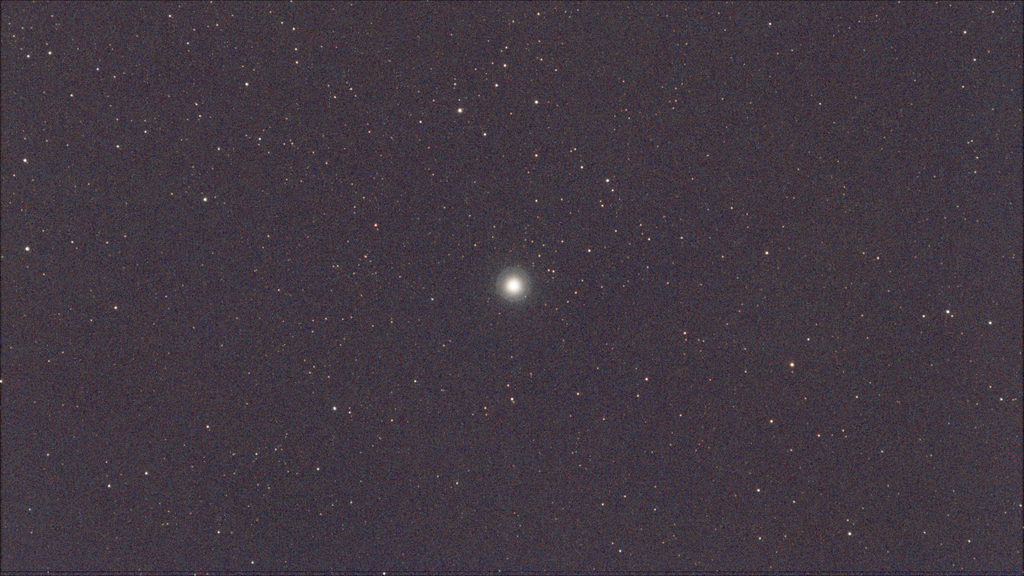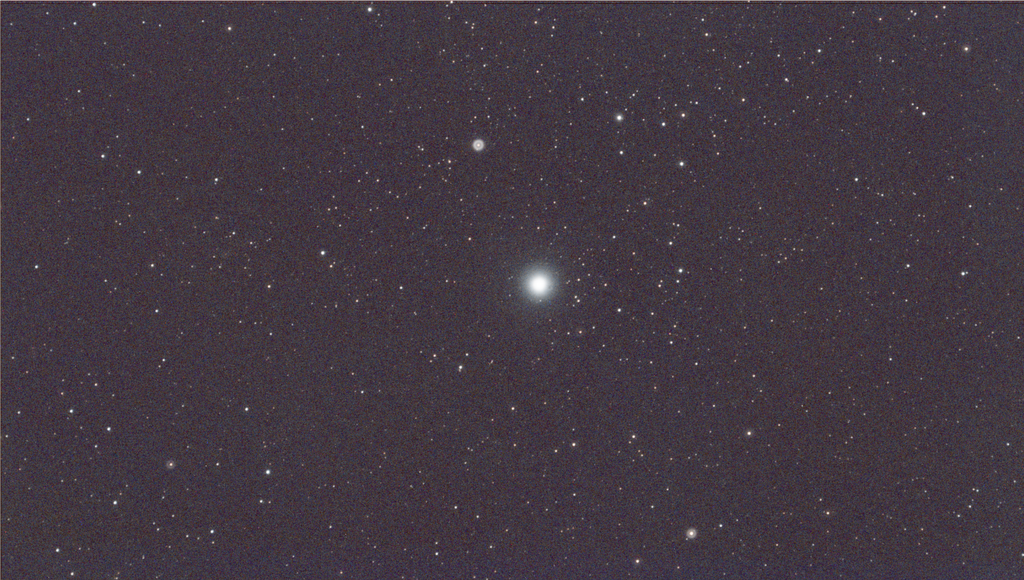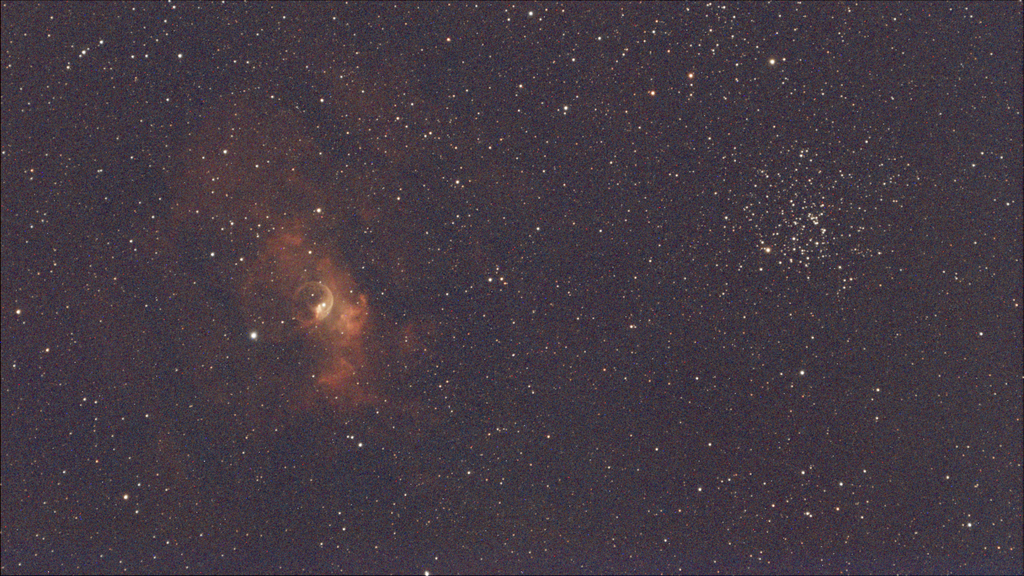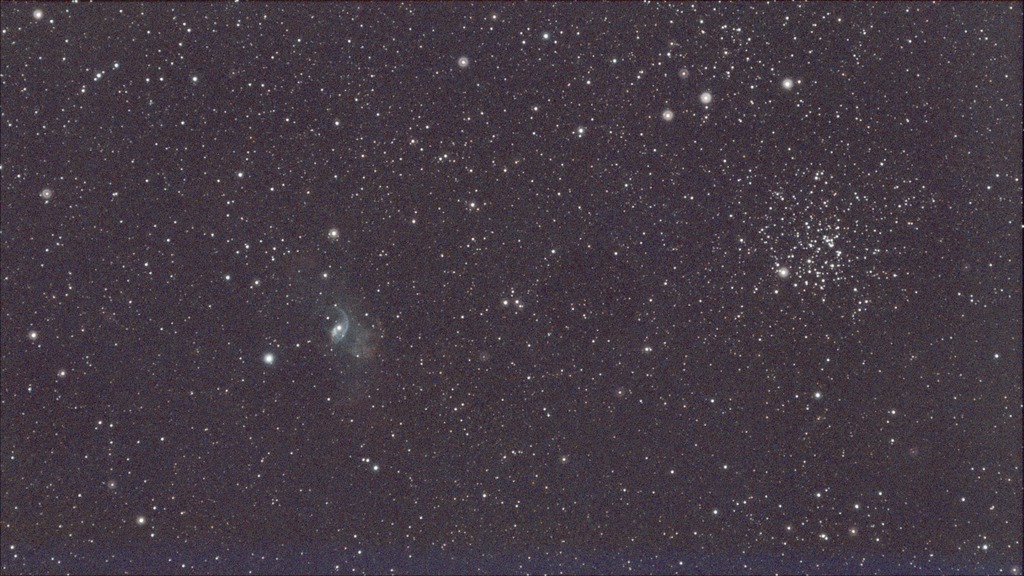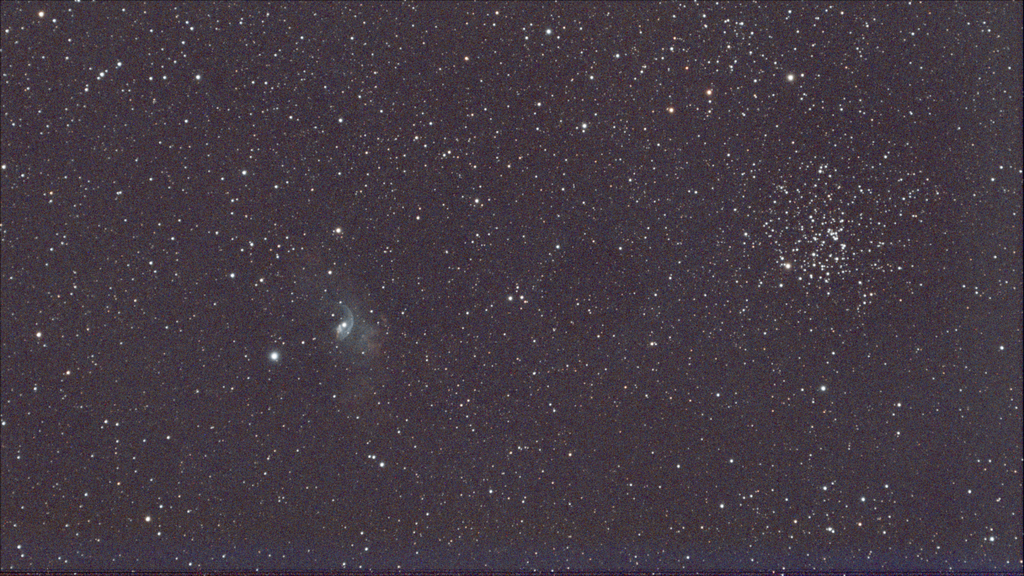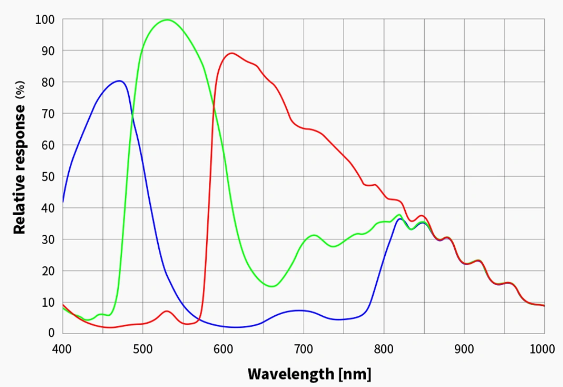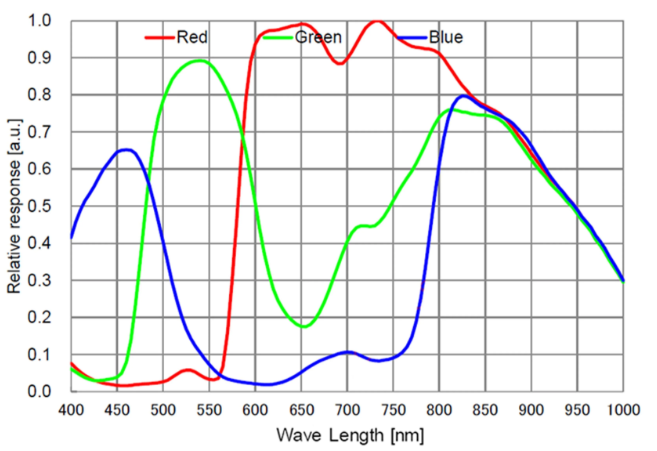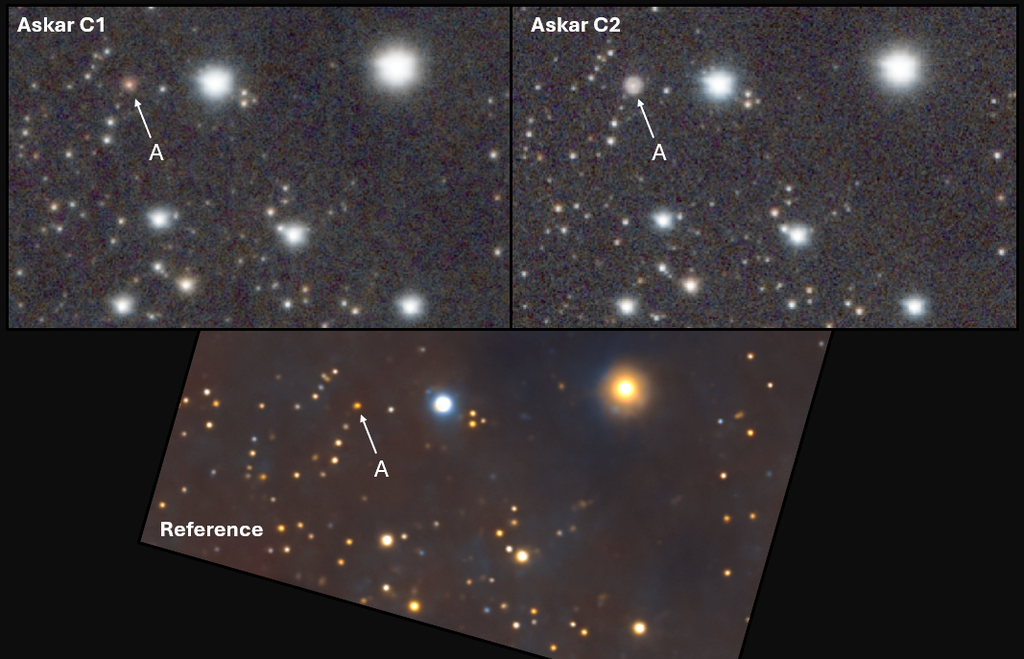DiscussionAs can be seen, the SV220 filter is doing a good job preventing halos with the exception of the bright star Alderamin, but I think that is acceptable given the cost of the filter. I should also note that the type of halo it shows (a thin ring) to me, is kind of pleasant? It almost adds the appearance of a lens flare which I personally don’t mind.
Now compare the background stars in the Askar C2 image. While there isn’t the same thin ring halo on Alderamin, there are definitely some unique halos around some, but not all, of the stars.
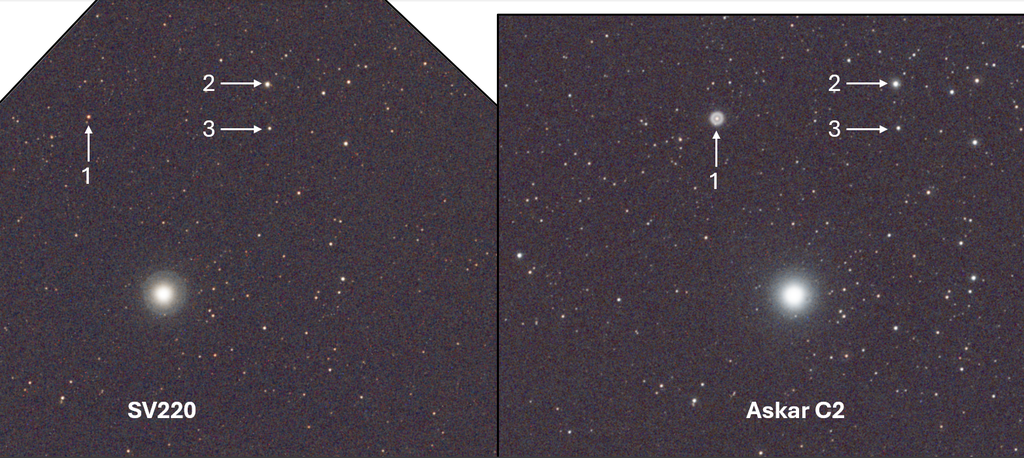
Unfortunately, I find these donut looking halos unappealing, and they also provide a challenge when using star removal with Starnet.
Is it an NIR leak?
When I first ran into this problem a few months ago, one person had suggested to me that the filter may be ‘leaking’ NIR light. I unfortunately don’t own or know anyone that has a spectrometer that can verify this, but by drawing some conclusions from the results, it does seem like it’s the culprit.When qualitatively looking at the stars with the most severe halos (See number 1 above) I notice that the star appears orange in colour. This would suggest that it is a cooler star, and possibly emitting more light in the NIR.
If I review the stars in Stellarium, I can use the Colour Index (B-V) value as reference, where negative numbers indicate hotter stars, and positive numbers indicating cooler stars. Star 1 has a value of 2.30 indicating a cooler star emitting light at longer wavelengths. Star 2 has a value of 0.48, still cooler but not as cool as 1. Finally Star 3 has a value of 0.29. At least for this small dataset, a trend can be seen where stronger halos are proportional to the (B-V) value. The higher the (positive) number, the stronger the halo appears. Take this with a grain of salt as I am by no means 100% of my assumptions, and the data set is extremely small.
NIR response of the Camera.
Below is the published spectral curve of the Touptek ATR585C using the Sony IMX585 sensor. Beyond 850nm the bayer matrix appears irrelevant and the response in all 3 colour channels is nearly the same.
If I review the halos in each colour channel separately, I don’t discern any noticeable difference which further pushes me in the direction of NIR being responsible for the halos.
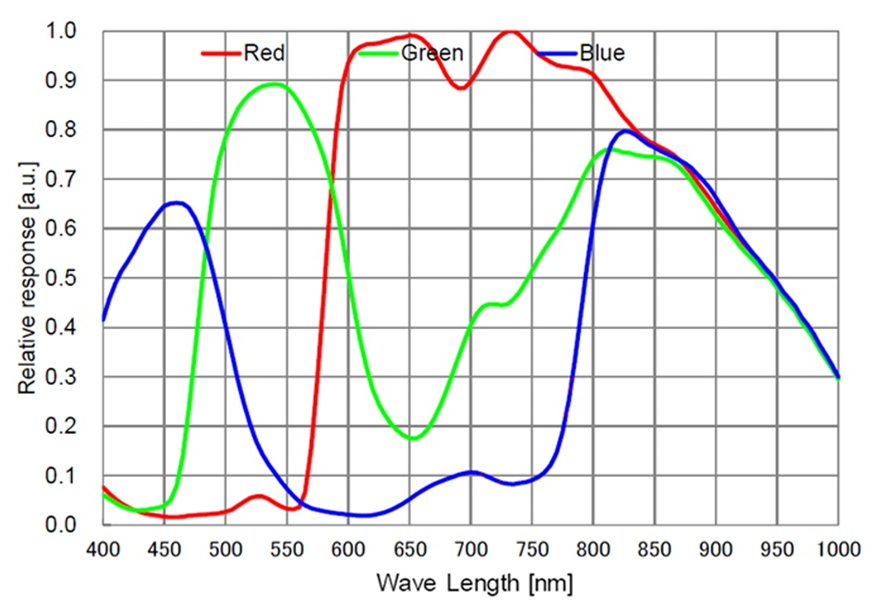
Optical Density.
A filter specification that I had never heard about until I started looking into the difference between the SV220 and the C2 (aside from the band passes and band widths) was that the SV220 has an OD value of ≥5. While the C2 has an OD ≥3.Again, I’m by no means an expert on this property, but fundamentally it is the ability for the filter to reduce or attenuate the incoming wavelengths it’s not designed to pass.
In the case of the two tested filters between roughly 300-1000nm. From some quick googling, the difference in OD3 to OD5 is 1,000x and 100,000x respectively.
Is it just a bad copy of the filter?
When I was originally looking at this issue with a different camera (Player One Neptune CII) that also has increased NIR response, I reached out to Askar to see if they had any suggestions. They simply offered to replace the filter if I sent it back to them. Luckily my local astronomy store was kind enough to also reach out to them and agreed to do the exchange locally, which I appreciated.Upon receiving the new filter, I noticed the same issues but decided to keep it anyways because…
SolutionA simple solution one person had suggested to me (assuming the problem was NIR) was to simply add an additional UV/IR cut filter and see what happens. And as the results show, it fixes the problem. While not ideal if you can only add a single filter to your imaging train, I luckily can put it on the nosepiece of my field flattener and enjoy using the filter in my drawer without halos.[b] [/b]
Zoomed in on the bubble nebula, despite the poor focus on my part of the image on the right, the donut halos are eliminated by the addition of the UV/IR filter. Lower image pair shows the dramatic difference adding a UV/IR filter has made on bright stars above the star cluster.:
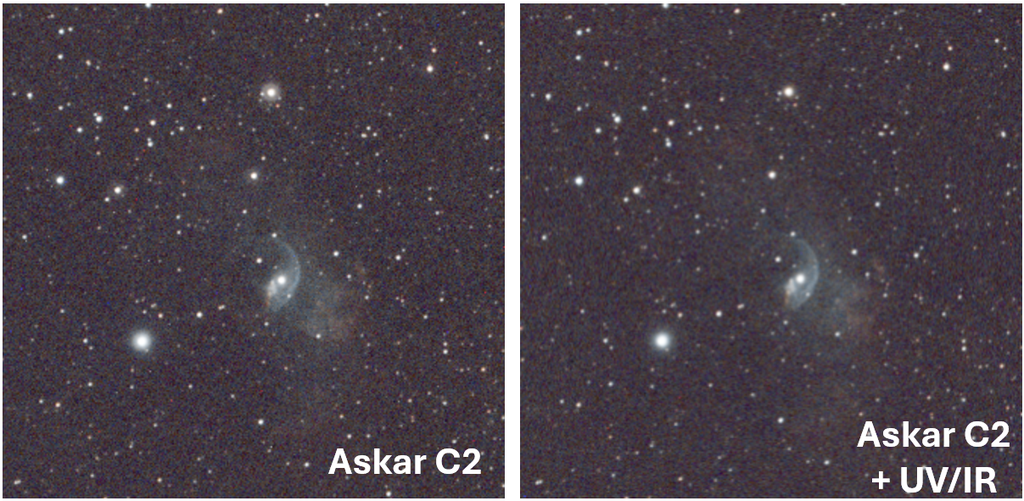
 Conclusion
ConclusionSo for those who made it this far, thank you. Hopefully most of what I said makes sense. Based on my tests it seems to me that Optical Density (OD) may be a critical specification when looking at narrowband filters for OSC cameras that are sensitive to NIR and don’t have a built-in UV/IR glass over the sensor. I’m unsure what OD value some of the higher end filters have, but admittedly didn’t spend a lot of time looking.
My best guess is that the Askar C2 being one of the cheapest dual narrowband filters on the market, corners have to be cut somewhere. One of them I suspect is using the lower OD value. Assuming that their published spectrum of the filter is 100% accurate. Their D1/D2 line of filters indicate that they are OD5. It would be interesting to see if one of these filters shows the same halos or not but at nearly 3 times the price it’s not within my budget.
But as I said at the very beginning, the addition of a cheap UV/IR filter is an economical way to ‘enhance’ the filter making it at least as good as a more expensive budget filter when it comes to rejecting these supposed NIR halos.
